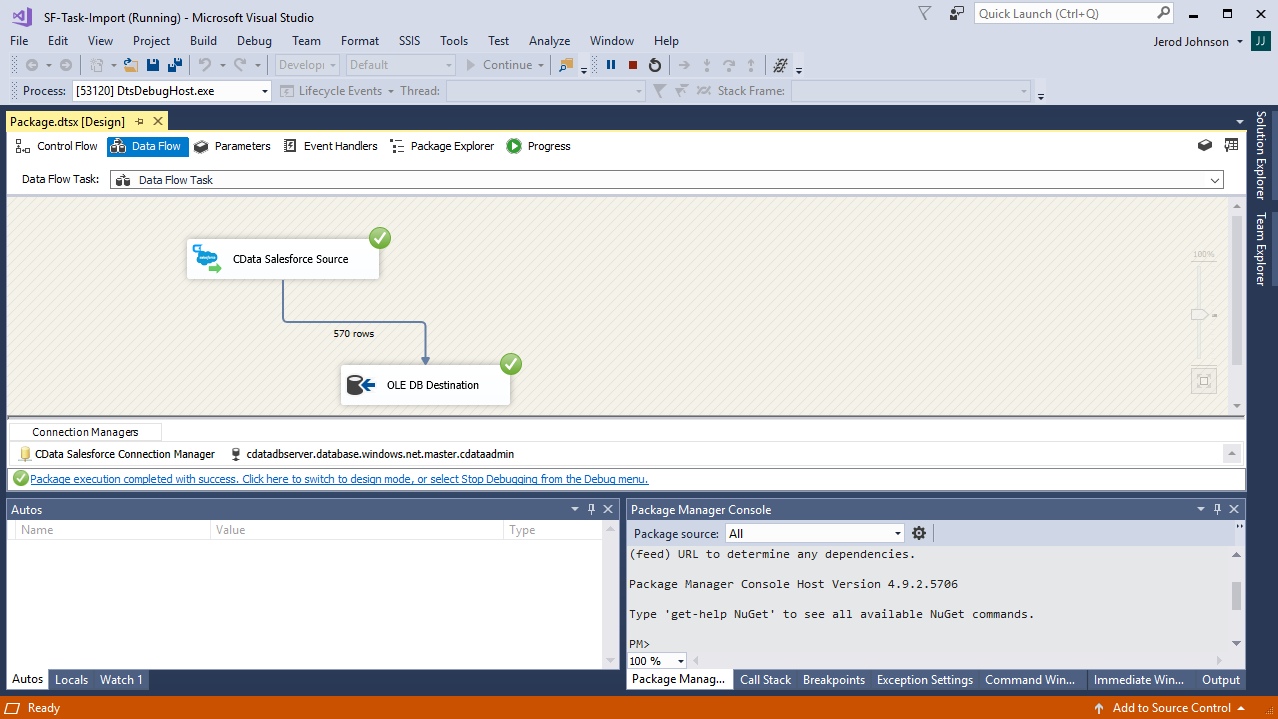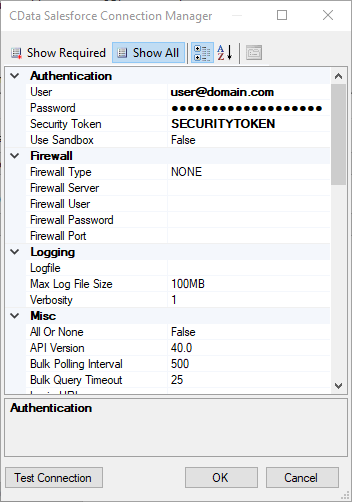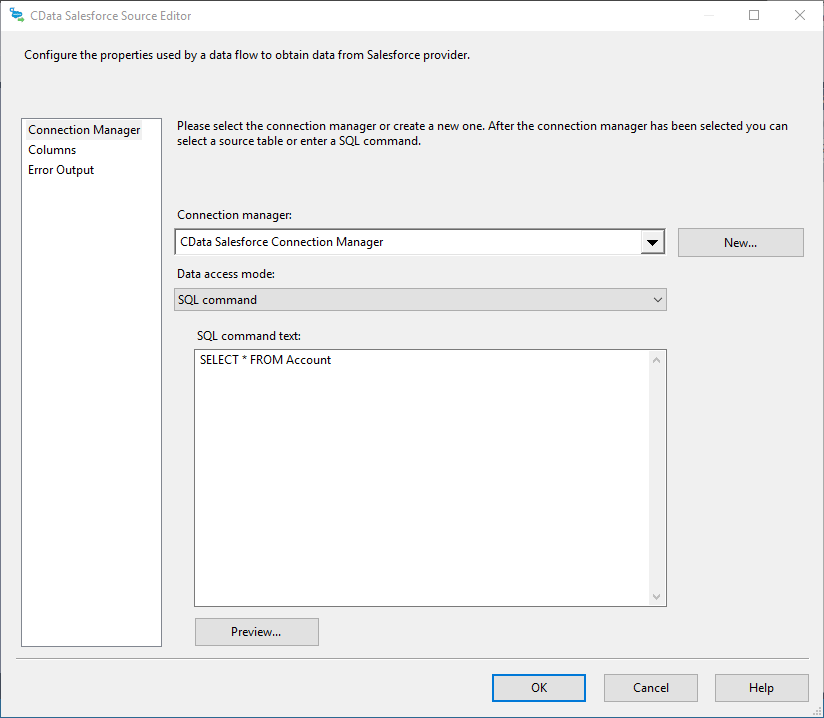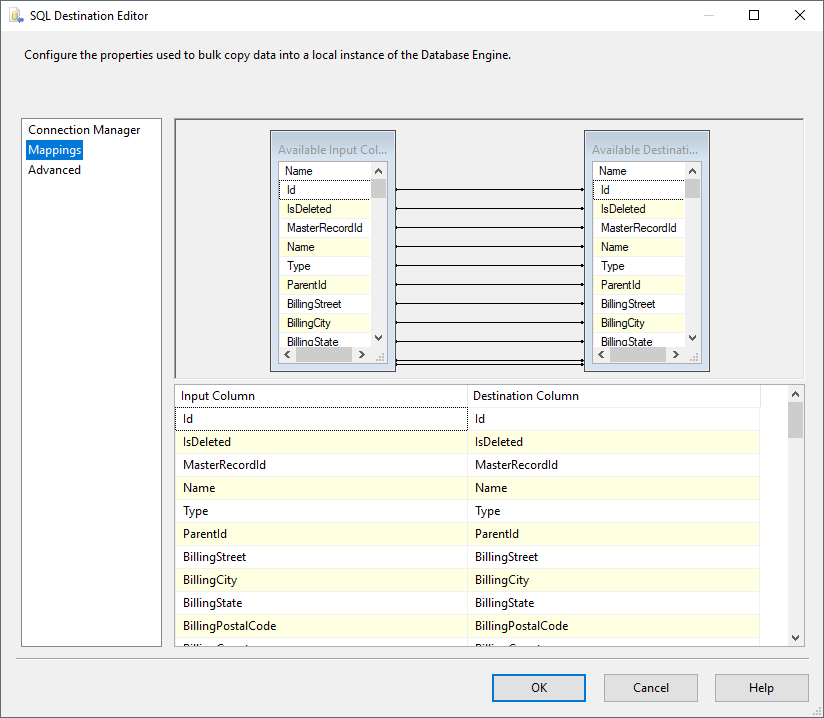Discover how a bimodal integration strategy can address the major data management challenges facing your organization today.
Get the Report →How to Import Dynamics 365 Business Central Data into SQL Server using SSIS
Easily back up Dynamics 365 Business Central data to SQL Server using the SSIS components for Dynamics 365 Business Central.
Using SQL Server as a backup for critical business data provides an essential safety net against loss. Backing up data to SQL Server enables business users to more easily connect that data with features like reporting, analytics, and more.
This example demonstrates how to use the CData SSIS Tasks for Dynamics 365 Business Central inside of a SQL Server SSIS workflow to transfer Dynamics 365 Business Central data into a Microsoft SQL Server database.
Add the Components
To get started, add a new Dynamics 365 Business Central source and SQL Server ADO.NET destination to a new data flow task.
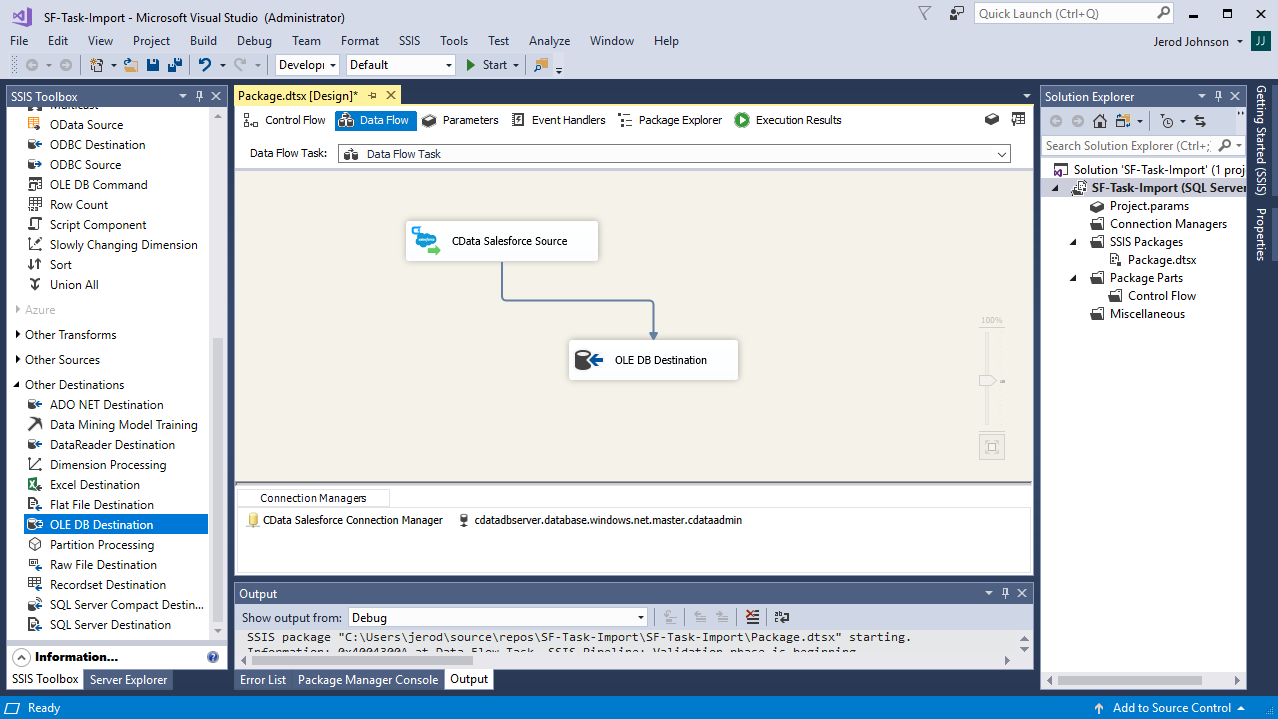
Create a New Connection Manager
Follow the steps below to save Dynamics 365 Business Central connection properties in a connection manager.
- In the Connection Manager window, right-click and then click New Connection. The Add SSIS Connection Manager dialog is displayed.
- In the Connection Manager type menu, select D365BusinessCentral. The CData Dynamics 365 Business Central Connection Manager is displayed.
- Configure connection properties.
To authenticate to Dynamics 365 Business Central, you must provide the User and AccessKey properties.
To obtain the User and AccessKey values, navigate to the Users page in Dynamics 365 Business Central and then click on Edit. The User Name and Web Service Access Key values are what you will enter as the User and AccessKey connection string properties. Note that the User Name is not your email address. It is a shortened user name.
To connect to data, specify OrganizationUrl. If you have multiple companies in your organization, you must also specify the Company to indicate which company you would like to connect to. Company does not need to be specified if you have only one company.
![Configuring a connection (Salesforce is shown).]()
Configure the Dynamics 365 Business Central Source
Follow the steps below to specify the query to be used to extract Dynamics 365 Business Central data.
- Double-click the Dynamics 365 Business Central source to open the source component editor.
- In the Connection Manager menu, select the connection manager previously created.
- Specify the query to use for the data extraction. For example:
SELECT accountid, Name FROM Accounts![The SQL query to retrieve records. (Salesforce is shown.)]()
- Close the Dynamics 365 Business Central Source control and connect it to the ADO.NET Destination.
Configure the SQL Server Destination
Follow the steps below to specify the SQL server table to load the Dynamics 365 Business Central data into.
- Open the ADO.NET Destination and add a New Connection. Enter your server and database information here.
- In the Data access mode menu, select "table or view".
- In the Table Or View menu, select the table or view to populate.
- Configure any properties you wish to on the Mappings screen.
![The mappings from the SSIS source component to SQL Server. (Salesforce is shown.)]()
Run the Project
You can now run the project. After the SSIS Task has finished executing, your database will be populated with Dynamics 365 Business Central data.
